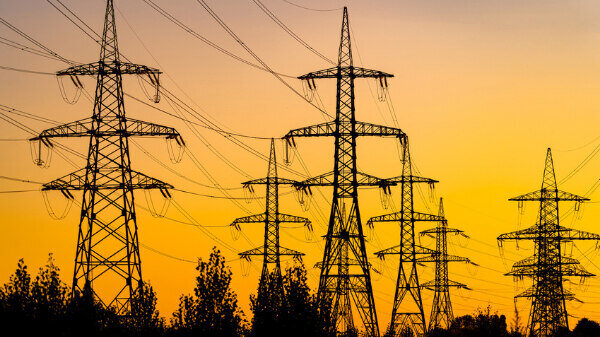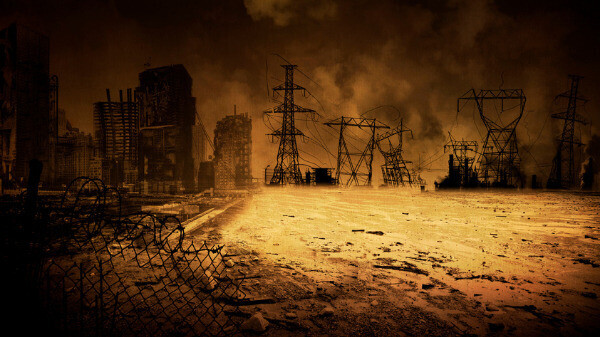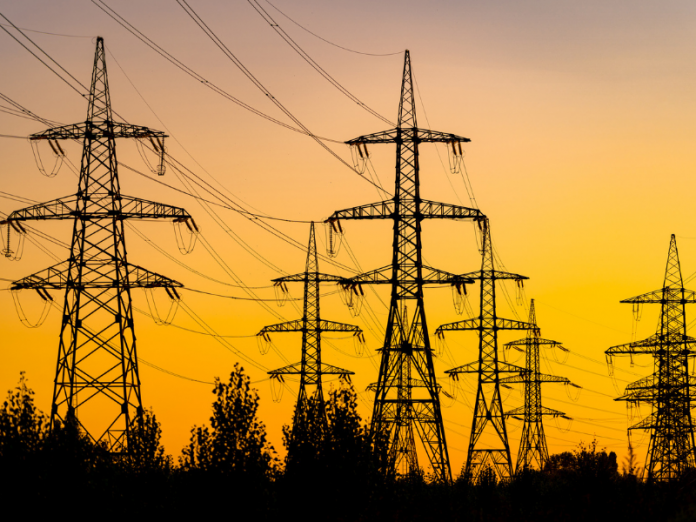YOU SHOULD SUBSCRIBE TO CLIMATE CHANGE WEEKLY.
IN THIS ISSUE:
- What Happens When Green Energy Fails?
- Podcast of the Week: SEC Goes Woke on Climate Change
- Carbon Cycle Accounting Numbers Wrong
- War Not a Product of Climate Change
- Sea of Japan Surface Temperatures, Sea Levels Higher 5,000 Years Ago Than Now
- Climate Comedy
- Video of the Week: Reactions to the New IPCC Report
- BONUS Video of the Week: Climate Models Explained
- Recommended Sites
What Happens When Green Energy Fails?

Previews of what will happen when green energy fails are popping up all over the world, and it doesn’t paint a pretty picture of the future.
Lessons from California, Texas, Europe, and Australia show that if the “Keep it in the Ground” movement succeeds in stopping the use of fossil fuels, the world loses.
In 2021, I experienced firsthand the dangers of overreliance on wind and solar energy. Although there was plenty of blame to go around when the Texas power supply failed across much of the state during a bout of extreme cold weather that winter, the replacement of reliable coal-fueled power plants with industrial wind facilities in the Western part of the state bore the lion’s share of the blame. Although wind promoters and apologists tried to pin the failure on regulators and natural gas plants, the shortage of wind power at a critical moment largely doomed the grid. Driven almost entirely by politics, not market demand, wind and solar power now account for approximately 28 percent of Texas’ electric power supply.
Data from the Electric Reliability Council of Texas showed that five days before the first snowflake fell, wind and solar provided 58 percent of the state’s electric power. Then, clouds formed, temperatures dropped, and winds temporarily stalled, resulting in more than half the wind and solar power going offline in three days, never to return during the storm. The problems got worse when the wind turbines froze and snow and ice covered solar panels.
As California’s power grid has grown ever “greener” under various laws imposed to fight climate change, Californians have had to get used to rolling blackouts and brownouts each summer. With wind and solar replacing coal, natural gas, and nuclear on the grid, and electricity replacing natural gas for cooking, heating, and heating water, the system has become unreliable. When Californians need power most—during summer for air conditioning, and to charge those electric vehicles to get to work and go shopping on a normal day, or to escape from seasonal wildfires, the power goes out, leaving residents to swelter in the dark and hope the winds don’t blow the flames their way.
California has the distinction of having simultaneously the nation’s worst air quality, among the highest gasoline and electric power prices, the most electricity generated by renewable sources, and the least-reliable electric power grid. The latter is not a coincidence. It is a direct result of California’s mandates to use electricity generated by wind and solar power.
Europe has likewise suffered through wholesale power outages in recent years. Europe took the lead in the leap into renewable energy, and the result has been rapidly rising prices and power shortfalls.
Last year’s power failures were especially acute. As Reuters and other media outlets reported, weak winds across Europe last summer resulted in industrial wind facilities generating much less electricity than was expected and needed. Blackouts and forced factory shutdowns were common.
In Britain, weak or nonexistent winds resulted in turbines generating less than 10 percent of expected capacity on more than 65 days by the fall of 2021, despite promises from power companies and the government that wind facilities would not produce less than 10 percent of their rated capacity on more than seven days in any one year. Wind power production declined by 20 percent for the year.
Then the second shoe dropped. Electric power from solar went into a sharp decline during late summer and early fall. In December, snowstorms covered huge solar arrays in England. Industrial solar provided less than 2 percent of expected power in December for days on end.
Europe’s response to these problems was to reopen some previously shuttered coal plants and rely on more natural gas imports from Russia. We know how the latter has worked out.
Commenting on Europe’s ongoing energy debacle, Ralph Schoellhammer, an assistant professor of international relations at Webster Vienna Private University in Vienna, told Newsweek, “The current energy transformation in Europe is probably the greatest geopolitical blunder since World War II, the last time when misguided ideologies plunged millions of people into what can justifiably be called the darkest period of human history.”
Now Germany, which led the anti-coal fight in the EU, is opening its ports and energy markets to coal imported from abroad. England is reconsidering its de facto moratorium on fracking. Faced with brutal energy reality and an angry electorate, energy concerns seem to be trumping climate concerns in Europe, at least for now.
Despite having abundant coal and one of the most reliable power systems in the world, Australia has also leapt with both feet into wind and solar electric power over the past decade. As is true everywhere else governments have forced this transition, power prices increased despite repeated claims wind and solar are cheaper than traditional power, and reliability suffered.
As detailed at the website “Stop These Things,” in recent years Australians have suffered both higher prices and repeated, widespread power outages during heatwaves, with thousands of households and businesses being left without electricity, sometimes for hours at a time. When the wind has flagged, the Australian Energy Market Operator has imposed rolling brownouts and power cuts at certain industrial facilities to keep the entire grid across a region from collapsing. To avoid violating its Paris climate agreement commitments, Australia’s government has cut power supplies instead of keeping coal plants operating as a spinning reserve to ramp up during times of peak demand.
Meanwhile, China, India, and the rest of the developing world go their merry way building new coal power plants, growing emissions right along with their economies. China, India, Pakistan, and others do not share the West’s magical thinking about energy.
I don’t like forced austerity for foolish ends. There is no more foolish end than believing we can control the climate through our energy use. What’s going on in Europe is evidence others are growing weary of wearing the energy hair-shirt as penance for the sin of using fossil fuels. I hope this is true and the trend continues.
SOURCES: Not a Lot of People Know That; Boston Globe; The Heartland Institute; The Heartland Institute; Newsweek; Reuters; Stop These Things
Check Out All Our Presentations in Scotland
Podcast of the Week
With Democrat appointees at the helm and the Biden administration’s encouragement, the supposedly independent U.S. Securities and Exchange Commission (SEC) has gone full-on woke on climate change.
Stepping well outside its legal mission to protect investors from fraud and the markets from insider trading and manipulation, the SEC has decided it knows what the managers of publicly traded companies, portfolio and fund managers, and investors should care about. Forget about making profits for companies and their shareholder-owners, a company’s financial condition and prospects based on business and market measures, or providing a secure, comfortable retirement for pensioners. According to the SEC, all of that should take a back seat to fighting climate change.
Carbon Cycle Accounting Numbers Wrong

New research published in the journal Nature Communications suggests the current understanding of Earth’s carbon cycle is incorrect. If this research proves true, assumptions built into climate model representations of carbon output and uptake are mistaken, as are their simulated results.
The estimate of how much carbon dioxide plants, oceans, and other biogenic and atmospheric factors pull from the atmosphere and store or reemit is critical to the accurate projection of atmospheric greenhouse gas levels.
A team of researchers from Virginia Tech University and the Pacific Northwest National Laboratory have found fundamental assumptions about the movement or cycling of carbon dioxide through the environment are flawed.
The research team examined the amount of carbon dioxide removed from the atmosphere by plants through photosynthesis, the storage of carbon dioxide in root systems and soil, how much those plants emit back into the atmosphere, and the movement of carbon dioxide through animals when they consume plants. The scientists found the widely published numbers for soil respiration are not in balance. They don’t reflect gross primary productivity accurately, implying the fundamental processes involved in the carbon cycle are more complex than is currently understood.
“Either the amount of carbon coming out of the atmosphere from the plants is wrong, or the amount coming out of the soil is wrong,” Meredith Steele, an assistant professor in the School of Plant and Environmental Sciences at Virginia Tech, told Phys.org. “What we found is that the models of the ecosystem’s response to climate change need updating.” Steele’s Ph.D. student Jinshi Jian led the research team.
The researchers conclude the source of the carbon cycle miscalculation is either that the remote sensing approach used underestimates gross primary production or the calculations of respiration overestimate the amount of carbon dioxide that plants return to the atmosphere.
SOURCES: Phys.org; Nature Communications
Heartland’s Must-read Climate Sites
War Not a Product of Climate Change

An analysis of 1,000 years of European wars, published in the journal Frontiers of Science, finds no evidence warmer climatic periods result in more war or other conflict.
The authors of the paper found increases in wars did not correlate regularly with either warmer or colder periods, indicating climate is not a substantial factor in driving internal strife or international conflict.
The findings contradict a claim often made by climate alarmists: that warmer temperatures, and the weather extremes they are projected by climate models to produce, will result in increasing numbers of global conflicts.
The authors of “A Song of Neither Ice nor Fire: Temperature Extremes Had No Impact on Violent Conflict Among European Societies During the 2nd Millennium CE” compared the incidences of European wars over the past 1,000 years, changes in climate extremes, climate optimums, and warm periods and cooler periods, using annual historical conflict records and four widely used temperature reconstructions for Central and Western Europe.
The data failed to confirm warmer climate periods lead to more conflict and wars.
“Our results indicated that none of the temperature reconstructions could be used to explain variation in conflict levels,” the study states. “It seems that shifts to extreme climate conditions may have been largely irrelevant to the conflict generating process in Europe during the second millennium CE.”
SOURCES: No Tricks Zone; Frontiers in Earth Science
Sea of Japan Surface Temperatures, Sea Levels Higher 5,000 Years Ago Than Now
Research published in Quaternary International indicates that in multiple periods during the current Holocene interglacial, the Primorye region of coastal southeast Russia was as warm as or warmer than today, making the region suitable to long-term habitation and agricultural cultivation.
At a time when proxy data indicate atmospheric carbon dioxide concentrations were far lower than today, approximately 265 ppm, the research indicates the Primorye region experienced annual temperatures “2-5°C higher than modern ones” from about 8,000 to 5,000 years ago. In addition, the adjacent Sea of Japan had surface waters 3 to 6°C warmer than today, and the sea encroached 1 to 1.5 km farther inland than it does currently, with sea levels being “2-3 m above the present level.”
During the Medieval Warm Period, surface temperatures were 1 to 1.3°C warmer and sea levels one meter higher in Primorye than at present, the research indicates.
The proxy data indicates some coastal sea waters that freeze today did not freeze during the early to mid-Holocene eras. Evidence also indicates an Asian clam species that survives only in a range of water temperatures warmer than at present in Primorye thrived there between 8,500 and 5,500 years before present. Currently, this clam inhabits warmer waters 500 kilometers south of the study area.
The evidence indicates it was during these much-warmer time periods that the Neolithic cultures of Rudnaya, Bosman, and Vetka “flourished,” as measured by maximum agricultural productivity and population growth.
SOURCES: Science Direct; No Tricks Zone
Video of the Week: Reactions to the New IPCC Report
On episode 12 of Climate Change Roundtable, Andy Singer, H. Sterling Burnett, and James Taylor discuss the recently released Intergovernmental Panel on Climate Change (IPCC) report. The new report doubles down on the climate “catastrophe” while abandoning the facade of scientific analysis.
BONUS Video of the Week: Energy Explained ep1 – Oil and Gas
Climate models are used to justify government policy on climate change. Anthony Watts explains what these models are and why they’re often inaccurate.
































[…] Link: https://heartlanddailynews.com/2022/04/climate-change-weekly-431-what-happens-when-green-energy-fail… […]
[…] Link: https://heartlanddailynews.com/2022/04/climate-change-weekly-431-what-happens-when-green-energy-fail… […]
[…] Link: https://heartlanddailynews.com/2022/04/climate-change-weekly-431-what-happens-when-green-energy-fail… […]